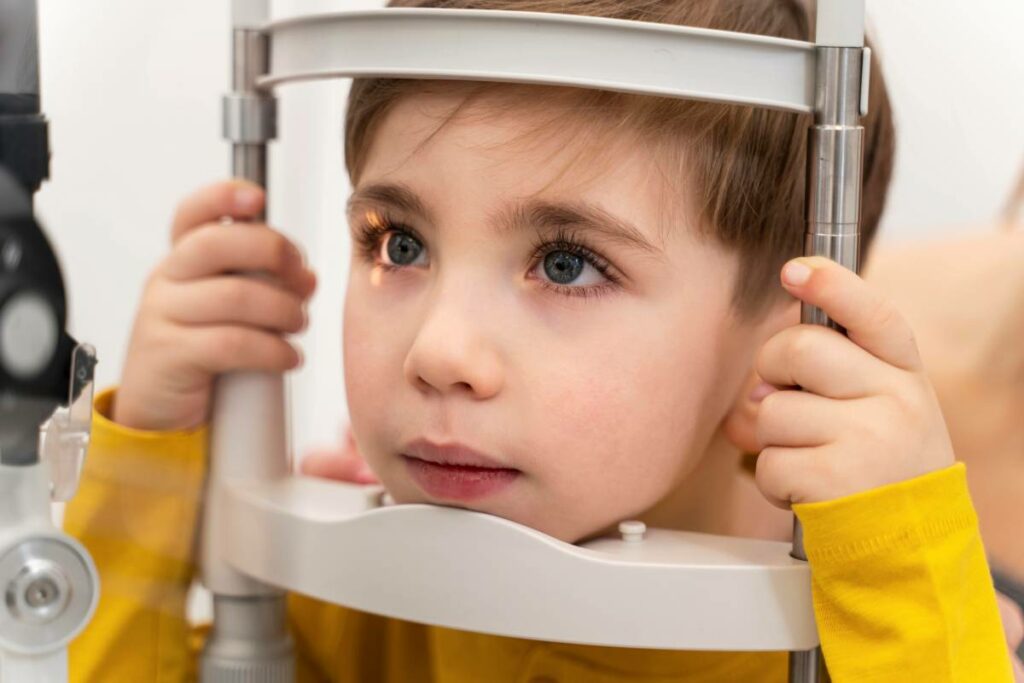
Lazy eye is a medical term for a condition with a lack of coordination between the two eyes. As a result, each eye receives its image, and the brain compensates by communicating with only one eye while having to turn off the other, known as the 'lazy eye.' Even with optical correction, lazy eyes cannot achieve clear vision.
Is vision therapy effective for lazy eyes? Vision therapy is a program that treats a variety of eye problems, which include lazy eyes. Vision therapy, as opposed to glasses or surgery, teaches the eye to repair itself.
What Causes Amblyopia?
A significant difference in nearsightedness, far-sightedness, or astigmatism between the two eyes left uncorrected for a prolonged period during childhood is the most common cause of lazy eyes. When the brain receives both a blurry and a clear image, it begins to ignore the blurry image. As time goes by, the brain begins to ignore or neglect the weaker eye, causing vision loss that cannot be corrected.
Another common cause of amblyopia is strabismus. Strabismus, commonly known as squint, is a misalignment of the eyes when one eye turns in or out, up or down. People with strabismus struggle to focus on a single image. As a result, the brain ignores the image from the eye with a squint that becomes a lazy eye.
Additionally, amblyopia can be caused by obstructions that prevent visual stimulation. This could be a droopy eyelid or a cataract, a clouding of the clear lens in the eye. Amblyopia may disappear or persist even after the obstruction is removed.
Is Lazy Eye Genetic?
Yes. A person can inherit lazy eyes from genetics. Therefore, it is better to check with an eye doctor from the birth of children until they are adults to ensure that the brain and eyes can form a connection. However, this connection can be delayed when vision in one or both eyes is obstructed. As a result, vision from one eye becomes dimmer than in the other eye. Over time, the brain learns to ignore dim images, and the eyes get lazy.
Three Types of Treatment for Lazy Eyes
1. Using A Blindfold
The eye that works "well" is covered with a special patch for several hours a day for several months, so the "lazy" eye has to work.
Advantage:
Simple and cheap treatment compared to other treatments
Weakness:
- It takes time because the brain gets used to using the better eye; when the patch is removed from the weaker eye, the brain will return to using the better eye.
- An unpleasant experience, making vision worse by taking the good eye away from the patient.
2. Eye Drops
Atropine eye drops can be used to temporarily impair the "good" eye's ability to see clearly. This medication dilates the pupil and relaxes the good eye muscles, rendering the lens unable to focus for several hours, forcing the weak eye to focus on the image or object seen.
Advantage:
Does not require constant vigilance from parents or patients
Weakness:
May cause eye irritation, eye redness and headache
3. Vision Therapy
This therapy is a lazy eye treatment where the patient will be taught to use both eyes together correctly which can get rid of lazy eyes.
Advantage:
Effective treatment without surgery
Weakness:
- Regular eye exercise
- Good cooperation between therapist and patient
The cause of amblyopia usually determines the treatment. Early detection is critical. Finding the right treatment for the eye, adhering to therapy, and conducting regular monitoring are essential to achieving positive results. If amblyopia is not treated as soon as possible, the vision in the eye may be permanently affected.
The first step to treating lazy eyes is to schedule a functional vision evaluation to determine the extent to which vision problems contribute to your child's difficulties. Contact us for more information or to schedule an appointment with Dr Masdi.

